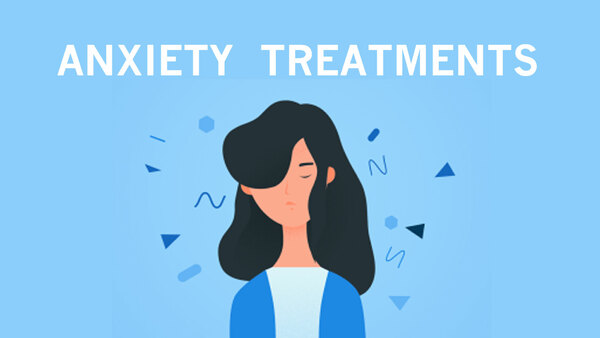
Can pilates reduce anxiety?
Pilates is a form of exercise that is often lumped together with yoga. There are some similarities: they both typically take place on a mat, improve core strength and place emphasis in the breath.
But that is where the similarity ends. Pilates was developed by Joseph Pilates, a 20th century German physical trainer. In this article, we'll look at what the supposed benefits of pilates are and how to try some of the exercises.
Editor's note: This article was written by a guest author. There is no evidence Pilates reduces anxiety, or indeed that it helps with any medical condition. But it is exercise, so if you enjoy it, keep doing it.
Introduction
Pilates can be incredibly powerful in providing a place where the body relaxes rejuvenates and releases tension. The principle of the Pilates method is to breathe, oxygenate the blood that calms the brain. Breathing creates a physiological response that naturally reduces stress and anxiety in the body. If you live with anxiety, it's time to look beyond yoga and meditation and try Pilates. Pilates can be more than just a way to get toned arms and a way to get a rocking core.
In addition to physical benefits, it can also help to improve mental focus and concentration, reduce stress and anxiety, and increase energy. By learning to adapt to your movements and breathe, Pilates can help you cope with difficult situations that are particularly important to people who are concerned. Pilates teaches human strategies to better control the body when it is under physical or mental stress. This can ultimately alleviate symptoms of anxiety, such as rapid breathing, and reduce heart rate. Pilates uses intentional and fluid body movements for strength and flexibility. These deliberate movements can also help in relieving stress, great for mind and body.
How Pilates can help:
1. Pilates can be a form of meditation
Pilates can be a form of meditation that gives you a space to focus on the present moment (and the muscle you're working on) and leave all the stress of the day at the door. This is the principle of the Pilates method of breathing, oxygenating the brain to calm the brain.
2. Pilates teaches you to be more aware of your body
In addition to being more conscious of the body, you will be able to control your body better when exposed to high stress levels.
3. This breed of endorphins
As with any physical exercise, Pilates allows endorphin hormones to flow through the body. These great endorphins are much stronger hormones than stress hormones.
4. Feeling strong and confident
Pilates is a challenge to your body and mind. How it feels to have a view or a new spring setting suddenly, which was impossible to do in a moment or two weeks ago! You feel stronger and earn more confidence in yourself, which can save you from stress.
Try the following 5 Pilates moves to get started.
Windscreen wiper blades
This abdominal exercise is ideal for creating movement between the spine and the hips and helps improve strength and stability.
- Lie on your back with your knees bent and feet flat on the floor.
- Stretch your arms out on the floor in a "T" position with your palms facing up.
- Breathe out and slowly release your legs to one side, keeping your knees together. Use your abdominals to control the movement and try to avoid rolling your hip off the floor while twisting.
- Repeat in the other direction. Complete 10 repetitions.
Seated roll downs
- Sit with your legs twisted and your feet flat on the floor.
- Lay your arms extended out in front of you, palms facing the sides of your hips.
- Gently exhale and roll down through your spine, bring back your tailbone as you lie down on the floor, keep your abdominals engaged throughout the movement.
- Reverse the flow by lifting its head and rolling up one of your vertebrae one at a time until it returns to its initial position. Repeat this procedure 5 times.
Bridge
This is an exercise for your buttock and lower back which helps create strong muscles in the legs and hips and can relieve pain and tension.
- Lie on your back with your legs bent and flat on the floor.
- Exhale and lift your hips off the floor until your body is in a straight line. Squeeze your glutes and engage your core holding for one count at the top of the movement.
- Be sure to keep your shoulders on the ground and do not stretch your back too much or lean against the neutral position.
- Return to the starting position and repeat 5 to 10 times.
Forward Fold
This stretching of the hamstrings combines deep breathing and stretching for total body relaxation.
- While your feet are flexed, sit on the floor with your legs stretched out in front of you.
- Breathe in as you reach your arms out to the side and up above your head.
- Breathe out and reach forward with your arms as you bent from the hips joints. Wait for a count.
- Return to the starting position by moving your arms sideways and over your head as you return to a seated position. Find length through the spine and hold a long neck throughout the movement.
Seated rotations
Many anxious people suffer from tension in the back, neck and shoulders, causing headaches and neck pain. These seated rotations are excellent for releasing tension at the upper back region and activating the thoracic spine region.
- Sit on the floor, with your legs stretched out in front of you, hip-width apart.
- Sit high tilting slightly forward away from your tailbone, finding length through the spine and neck.
- Put your hands behind your head, your elbows sideways.
- Slowly rotate towards your right side. Feel the side abdominals working to create the movement. Visualise yourself getting taller as you twist.
- Return to centre. Repeat on the other side. Repeat the movements a total of 10 times.
Conclusion
Pilates provides many benefits to the body and mind. Try it routinely to alleviate anxiety and feel stronger and more comfortable than ever before, both internally and externally.
Related articles
Metadata
Published 31 December 2018. Written by John Tucker.

